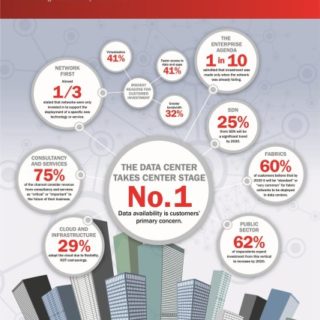
It is indeed strange that in the Middle East, while it is apparent that organisations are all eager to deploy the very best technologies to mastercard viagra streamline business processes, increase agility, create new revenue streams and deliver new services, many are overlooking the most basic and fundamental element of their IT infrastructures in doing so.
In a world where commercial viability equals reliable connectivity, some people still don’t seem to understand why the network matters.
The financial implications of network outage can be monumental, especially for organisations where the 24/7 availability of online services is essential to conducting business – such as in the region’s booming banking and financial industry. Such organisations should be well aware of the consequences of network failure. A prime example of this was the RBS/Natwest technical outage that blighted the bank and its customers and cost the firm £125mn (UAE dirhams 750mn) according to the company’s financial reports[1].
The network is also paramount to the rapidly growing online retail industry in the region. B2C e-commerce sales in MENA are expected to reach $15 billion (UAE dirhams 55 billion) in 2015 and availability and reliability is vital to this. E-commerce giant Amazon.com suffers losses of about $5 million (UAE dirhams 18.3mn) for every hour it is not up and running. In 2009, Paypal suffered a 4-hour service outage, with an estimated loss of $28 million in commerce.
Clearly, get viagra network downtime impacts profitability. Yet global research commissioned by Brocade, shows that despite this commercial reality, many organisations still depend on antiquated data centre infrastructures, with a third of respondents admitting that their organisations experience multiple network failures each week.
Furthermore 61 viagra canadian scam percent of data centre personnel confided that their corporate networks are not fit for the intended purpose, with almost half (41 percent) admitting that network downtime has caused their business financial hardship. 91 percent of IT decision-makers stated that their current diet with levitra IT infrastructures still require substantial upgrades to meet the networking requirements created by virtualisation and cloud computing.
Many of the data centres that exist today are based on 20-year old technologies, and the simple fact is that they can no longer keep up with demand.
Businesses may be concerned that they ‘can’t afford’ the necessary investment into the network, but they can’t afford not to respond to the changes that are impacting their data centers. Virtualisation and cloud models can provide much better utilisation of current assets, and more cost effective connection to services and applications. But they also require greater network agility and performance. Software-defined networking promises significant improvements to how the network can be managed and become more responsive to changing business needs, but it requires a more automated, efficient and flatter network topology than legacy three-tier architectures can provide.
The answer is to take a different approach to network design – that of Fabrics. Ethernet fabrics meet both immediate and future data center requirements, so services and applications can be deployed and accessed “on-demand”. Highly interoperable technologies combined with open standards, and flexible financing solutions are making it much easier and cost-effective to transition the data center into the 21st century.
This helps organisations move from the traditional networking model to the more desirable and more practical ‘on-demand’ approach which represents a major evolution in networking toward a highly virtualised, open and flexible network infrastructure. The result is a purpose-built network infrastructure for highly virtualised and cloud computing environments, and relegating downtime to where it belongs – firmly in the past.














